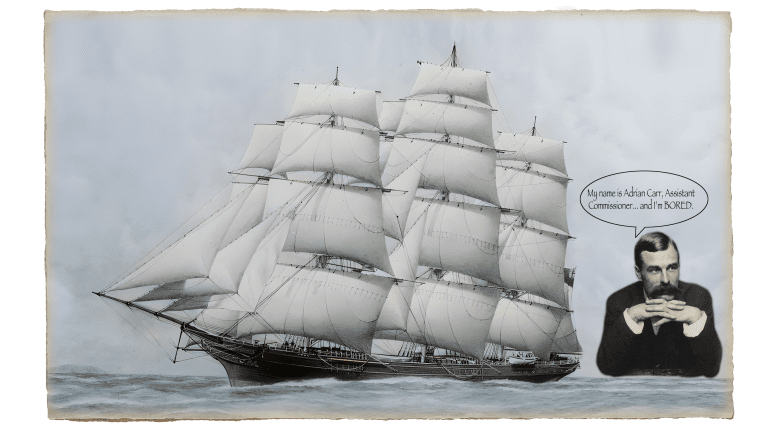Every house has a “junk drawer” – that place where you keep the Scotch tape, loose screws, parts of hings that may or may not belong to other things, the occasional spare light bulb, and so on. What lands in that drawer stops being junk when it’s needed (“oh, so that’s where the metric tape measure is!”) I see the Blog section of this website as a similar repository, a place to put ideas, connections, conclusions, and anything else that isn’t fiction or criticism but just … stuff … that has to do with Conrad in some way or another.
My ideas may be trite, my connections unfounded, my conclusions risible, but here they are. PLEASE use the Comments page (under “About” on this website) to fling brickbats, sing hosannas, or anything in between! This page will be updated on a regular basis, ie whenever anything new about Conrad
comes my way or bubbles up in the cauldrons of my mind. Thank you for reading.
Stephens is no King Leopold, no ersatz brickmaker or malignant manager. He is troubled by the poverty and passivity he finds in Guatemala, Honduras, and Mexico. He is disturbed that the indigenous people have no collective memory of their ancestors who built the temples he and his artist partner, Frederick Catherwood, are recovering stone by stone from the jungle. As a Protestant, he turns a gimlet eye on exploitative padres, but has no problem acknowledging clergy with more progressive ideals.
It is in his treatment of leaders and dictators, successful and otherwise, where Stephen’s manuscript most parallels Conrad. “An insurrection, I was told, had taken place … under the directions of a man called Carrera … ravaging the country and committing all kinds of excesses.” Apparently the previous administration had sent “six hundred troops, who routed them, plundered and burned their villages and … the last outrage was perpetrated upon Carrera’s wife. Roused to fury … with a few infuriated followers he went from village to village, killing the judges and government officers, when pursued escaping to the mountains, begging tortillas at the hacienda for his men … he could neither read nor write, but … urged on and assisted by some priests … issued a proclamation… demanding the destruction of
all foreigners.” Gaspar Ruiz, General Montero, Colonel Saltillo, the bandit Hernandez, and even Father Corbelan: all of these Conrad creations seem to hum in tune with these passages.
Finally, consider this, from Stephens: “Our principal muleteer, who was mounted, carried a machete and a pair or murderous spurs, with rowels two inches long, on his naked heels” and from Nostromo: “lean dark youths … with strips of raw beef twined round the crowns of their hats, and huge iron spurs fastened to their naked heels.”
Coincidence? Perhaps. I prefer to believe, however, that a young Polish boy in exile, a boy whose inflamed imagination was already leading him far from home, one day curled up with Stephens’ Incidents (in French translation probably) and read with fascination of the strange, rich, cruel, and beautiful continent across the seas.






 Visit Today : 11
Visit Today : 11 This Month : 11
This Month : 11 Total Visit : 12481
Total Visit : 12481